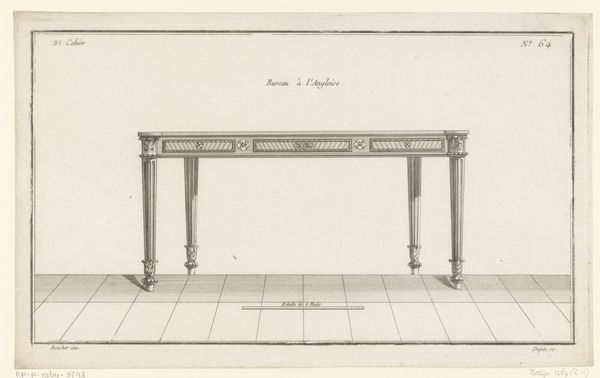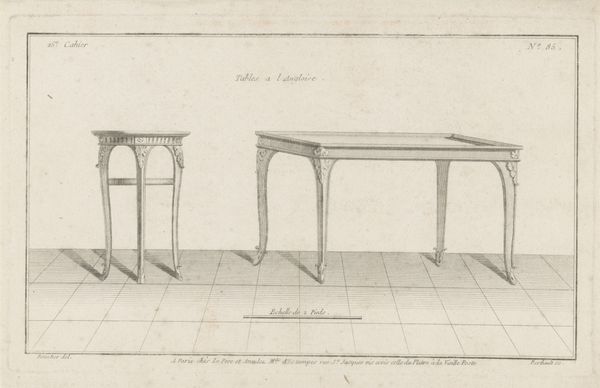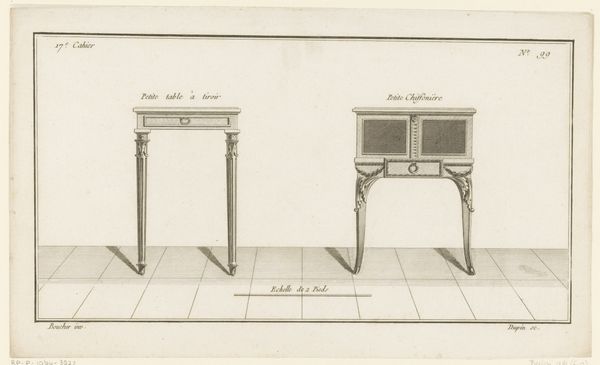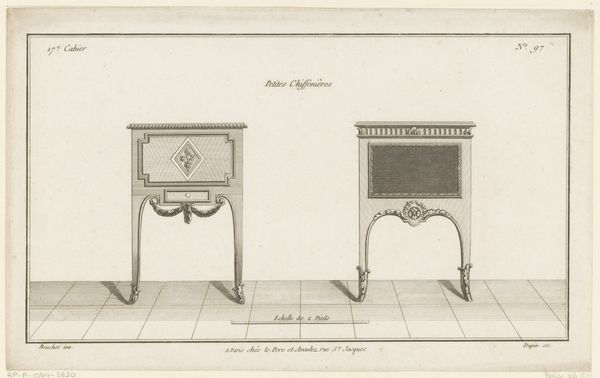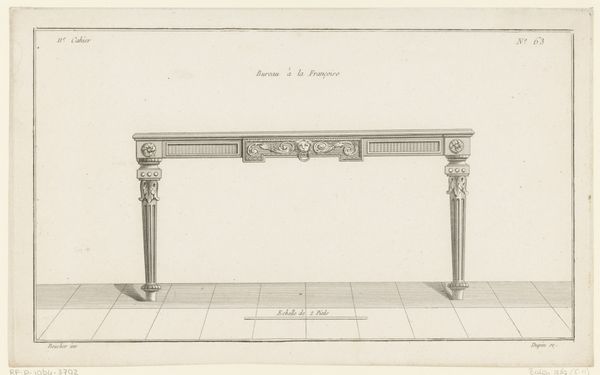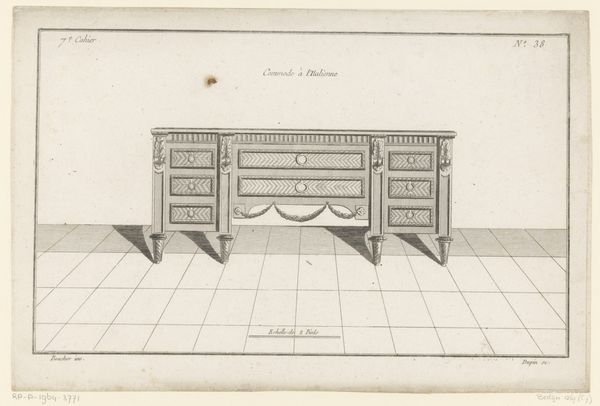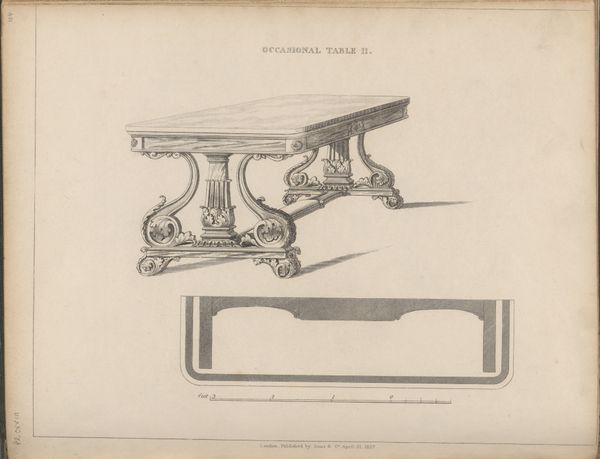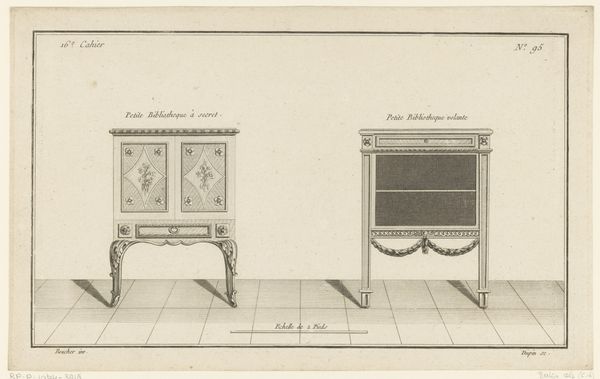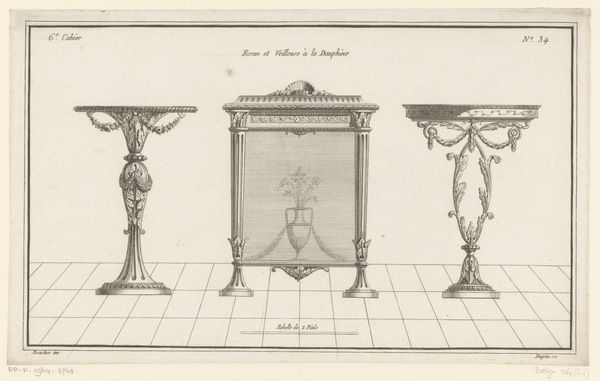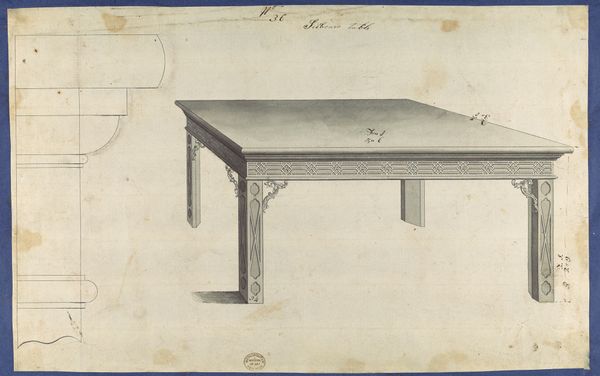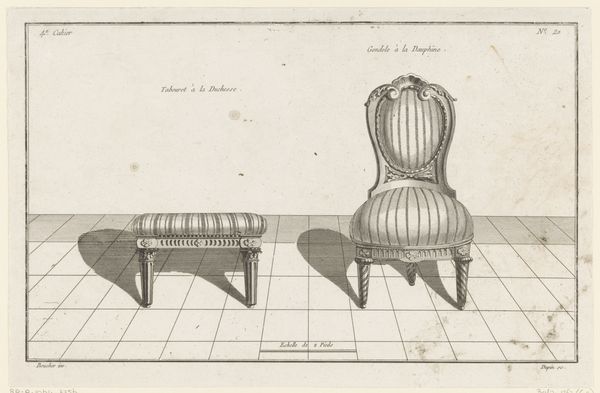
drawing, print, engraving
#
drawing
#
neoclacissism
# print
#
old engraving style
#
engraving
Dimensions: height 210 mm, width 316 mm
Copyright: Rijks Museum: Open Domain
Editor: This engraving by Pierre Gabriel Berthault, created between 1772 and 1779, showcases a round and a rectangular table in what appears to be a neoclassical style. It's so clean and precise. I wonder, what narratives of class and power were embedded in furniture design during this era? Curator: That’s a great question. Beyond their functionality, furniture designs, like these tables, become potent signifiers of social standing. What can these tables tell us about the shifting power dynamics in late 18th-century France? Who would have owned these, and what spaces did they occupy? Editor: Well, given the clean lines and the classical references, I imagine these tables were destined for wealthy homes, perhaps those of the aristocracy or the rising bourgeoisie, looking to emulate aristocratic taste. Curator: Precisely. Neoclassicism, with its emphasis on order and reason, became intertwined with aspirations of social mobility, of challenging and reshaping old aristocratic authority. Were these styles simply adopted, or were they adapted? To what extent were pre-existing cultural elements changed, altered, or left behind? Editor: So, the very act of acquiring and displaying such furniture would be a statement, a participation in this reshaping? Curator: Exactly. Think about how access to and ownership of such 'refined' items became another battleground in class relations, as taste itself became politicized. We also need to consider accessibility; were such designs readily available, or were there limited productions of items? Editor: That is truly intriguing! I hadn’t considered how deeply entangled furniture design could be with social and political struggles of the time. Now I look at these tables and see so much more than just well-crafted objects. Curator: It's crucial to read objects as active participants within these historical and social discourses, not merely passive reflections. We can decode how people negotiated power, identity, and status through material culture.
Comments
No comments
Be the first to comment and join the conversation on the ultimate creative platform.
